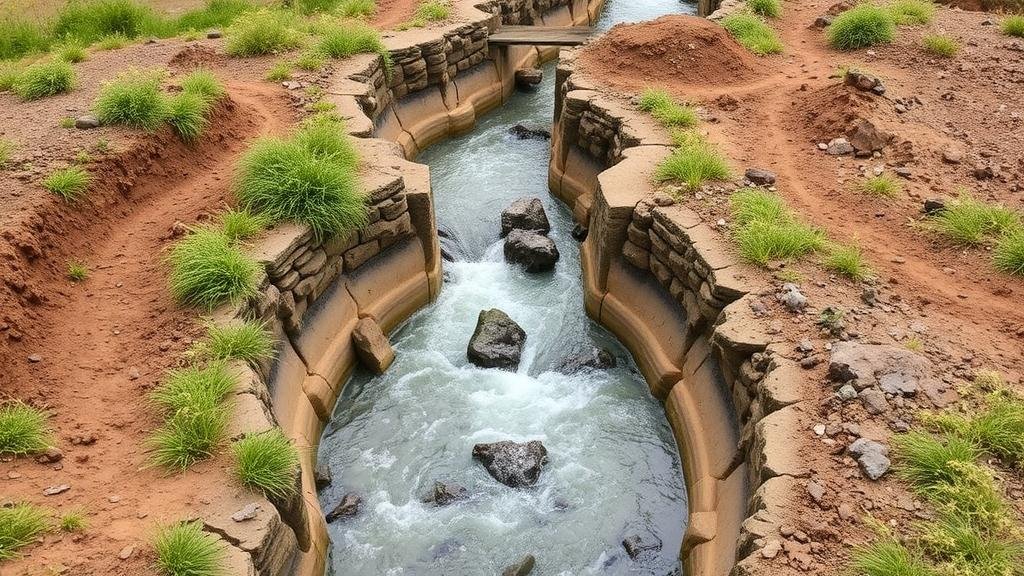How to Build Water Diversion Channels Using Agricola’s Techniques
How to Build Water Diversion Channels Using Agricola’s Techniques
The construction of water diversion channels is a critical aspect of agricultural water management. Such channels allow farmers to control water flow, ensuring that crops receive adequate irrigation while preventing erosion and waterlogging. One historical figure known for his innovative agricultural techniques is Agricola, a Roman scholar whose methods are still relevant today. This article explores how to apply Agricola’s techniques to build effective water diversion channels.
The Importance of Water Diversion Channels
Water diversion channels serve multiple purposes in agriculture, including:
- Directing excess rainfall away from crops to prevent flooding.
- Collecting and redistributing water during dry spells to optimize irrigation.
- Preventing soil erosion by controlling runoff.
Research shows that well-designed water diversion systems can increase crop yields by up to 30% in areas affected by inconsistent rainfall. Understanding the principles behind water diversion, informed by Agricolas techniques, can lead modern farmers to similar success.
Understanding Agricola’s Principles
Agricola emphasized the importance of land and water management in farming. His holistic approach involved understanding the landscape, soil composition, and climatic conditions. Key principles derived from his work include:
- Assessment of natural gradients to facilitate water flow.
- Utilization of materials available locally for construction.
- Integration of channels with existing topography to optimize efficiency.
Steps to Build Water Diversion Channels
The following steps outline how to construct effective water diversion channels using Agricola’s techniques:
1. Site Assessment
Begin by assessing the landscape where the channel will be built. Identify natural slopes, existing waterways, and vegetation. Use tools like a level or A-Frame to determine the lands inclination accurately.
2. Designing the Channel
Using the results of your site assessment, design a channel that follows the contour of the land. This may involve:
- Creating meandering paths to slow water flow and reduce erosion.
- Incorporating settling basins where sediment can naturally accumulate, thereby keeping the channel clear.
3. Selecting Materials
Choose materials that are abundant in your area for constructing the channel. Commonly used materials in Agricolas time included:
- Stone and gravel for lining the channel to prevent erosion.
- Local vegetation, such as grasses or reeds, to stabilize the soil.
4. Construction Techniques
Follow these construction techniques inspired by Agricola’s methods:
- Begin excavation by clearing the chosen path of vegetation and topsoil.
- Shape the channel to a gradual slope, typically no steeper than 5%, to manage water flow effectively.
- Line the channel with stones or fabric to reinforce its structure and prevent erosion.
5. Maintenance
A well-maintained diversion channel is crucial for long-term effectiveness. Regular tasks include:
- Inspecting for and removing debris that can obstruct water flow.
- Monitoring vegetation growth and replacing any lost plant materials that contribute to soil stabilization.
- Repairing any erosion damage promptly to ensure the channel remains functional.
Real-World Applications
Numerous farms worldwide have adopted similar techniques to build effective water diversion channels, resulting in significant improvements in crop health and yield. For example, farmers in arid regions of the southwestern United States have successfully utilized contour planting and water harvesting channels to conserve moisture and enhance productivity.
Conclusion
Building water diversion channels using Agricolas techniques not only honors a rich agricultural history but also addresses modern challenges related to water management in farming. By following these steps–conducting thorough site assessments, designing appropriate channels, and implementing sustainable construction and maintenance practices–farmers can optimize their water use, enhance crop yields, and promote sustainable agriculture for future generations. The knowledge passed down from Agricola remains a powerful tool in the quest for efficient and effective land management.



